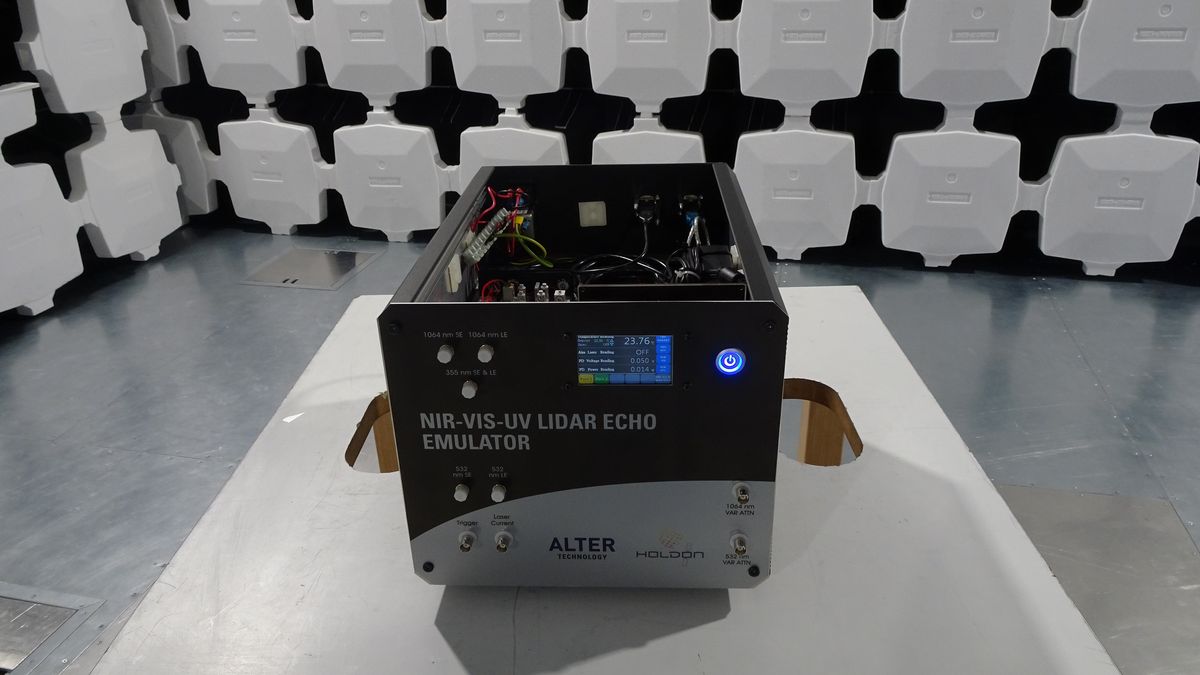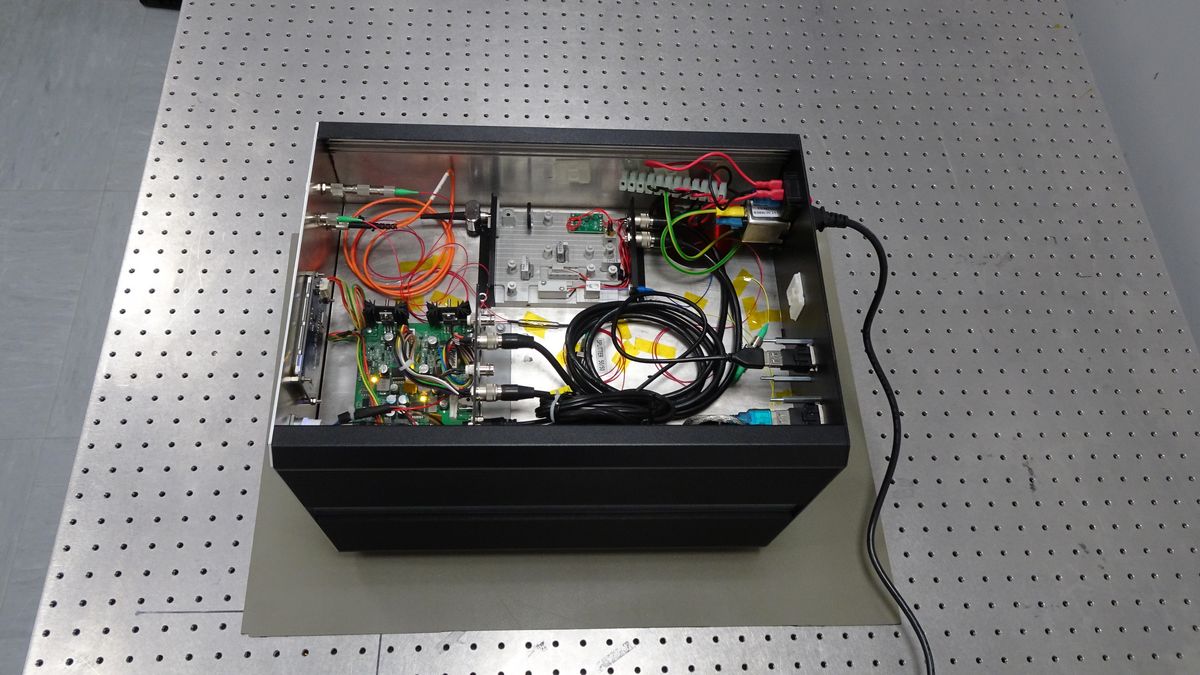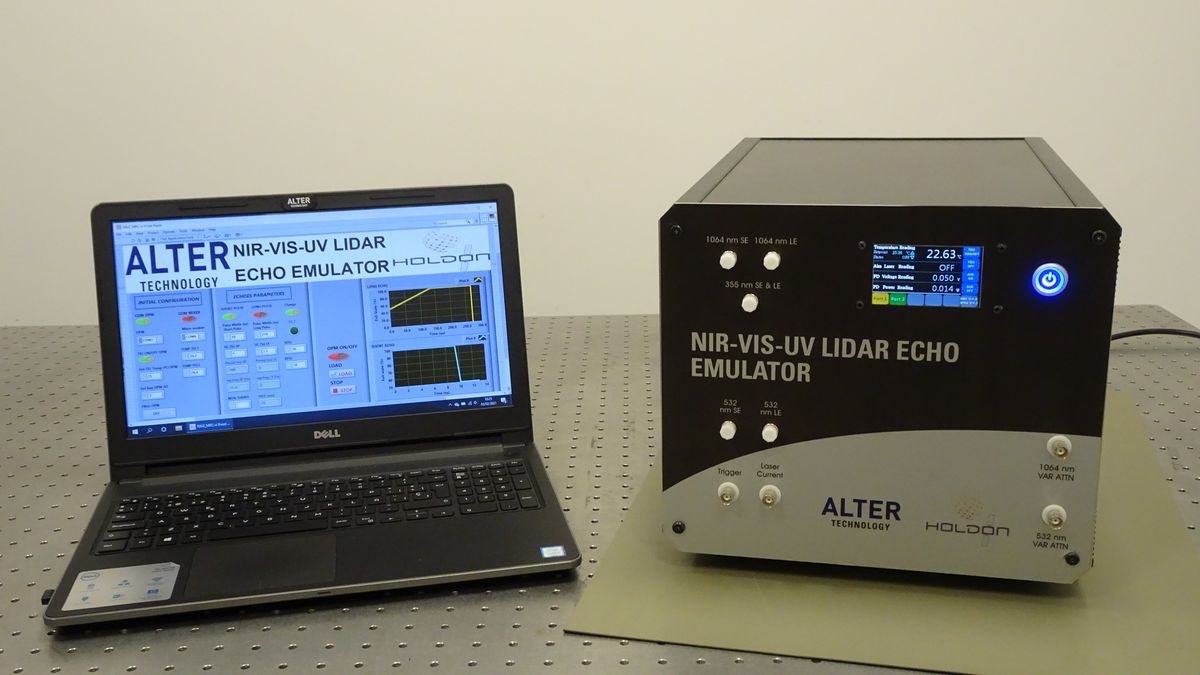Lidar remote sensing of the earth’s atmosphere is one of the main challenges in coping with the effects and causes of global warming caused by the emission of greenhouse gases.
The name lidar is the acronym of light imaging, detection, and ranging. It is a surveying method that measures distance to a target by illuminating the target with pulsed laser light and measuring the reflected pulses with a sensor.
The main objective of HOLDON project is to develop a new detection chain which will improve the performance of the Lidars on large platforms and/or reduce the Lidar payload to be integrated in the future micro and mini-satellites. The performance increase is obtained by the optimization of HgCdTe avalanche photodiodes that will be hybridized to a CMOS Readout Circuit providing two operation modes and designed to meet the most demanding requirements for Lidar applications in terms of sensitivity, dynamic range and temporal resolution.
Emulator of spatial LIDAR system in the NIR and Vis spectral regions
LIDAR is a powerful tool for the study of atmospheric properties, many of them relevant in contamination and global warming studies: greenhouse atmospheric gases, aerosols, clouds, and temperature, among others. The EU H2020 Programme project HOLDON (HgCdTe APD Optimization for LIDAR Detection Of greeNhouse gases), of which Alter Technology is a partner, is focused on the creation of a LIDAR emulator for terrestrial testing of airborne or satellite LIDARs. The project includes testing of both, emitters and receptors.
A specific HgCdTe avalanche photodiode (APD) module has been developed within this project. The aim of our work has been to extend the emulator’s wavelength range, so that it can work at three different wavelengths –355, 532 and 1064nm– from near infrared (NIR) and visible to ultraviolet (UVA). To achieve this goal, it is important to design and manufacture a compact emission module that can be eventually duplicated in an actual airborne or spaceborne LIDAR system.
The chosen wavelengths correspond to 3x and 2x harmonics of the fundamental 1064nm wavelength. This allows the generation of shorter wavelengths employing Second Harmonic Generation (SHG) and Sum Frequency Generation (SFG) crystals using a single laser source @ 1064nm. Figure 1 shows the final experimental setup that has been created for the 532nm and 355nm wavelength. The generation of UVA light has been more involved, since it requires mixing of 532nm and 1064nm beams of the same polarization. In the SHG crystal, however, these polarizations are orthogonal to each other. To rotate selectively the 1064nm polarization without affecting the 532nm wavelength propagating in the same beam, two π retarders @ 532nm have been inserted in the light path. The 532nm polarization remain constant (2π delay) while the 1064nm experiences a π delay since its wavelength is double.
Several non-linear crystals have been employed. SHG has been achieved with potassium titanyl phosphate (KTP) while SFG has been achieved with barium borate (βBaBO4, BBO) and potassium dideuterium phosphate (DKDP). Yet the power of doubled and tripled beams is low; new improvements in the experimental setup are been foreseen to overcome this issue.
more information: www.holdon-h2020.eu


